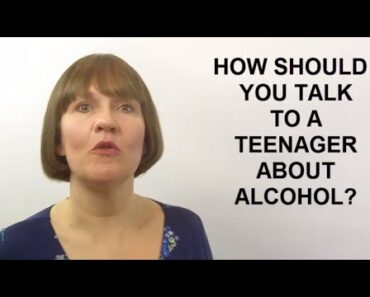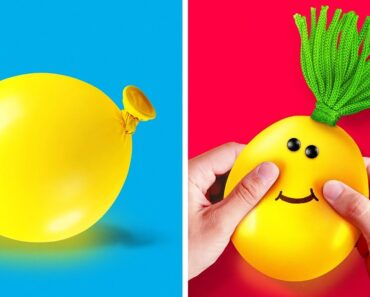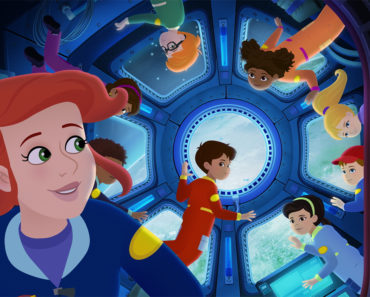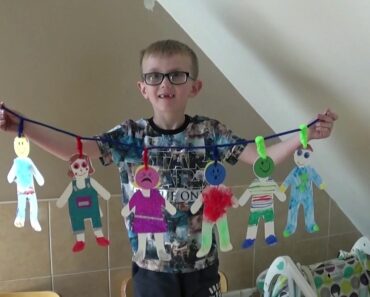The universe holds several mysteries and events that humans are unaware of even today. However, if there is one event that we know and understand, it is an eclipse. An eclipse is a phenomenon where one celestial body moves into the shadow of another celestial body. These eclipses occur periodically and are often visible from Earth.
There are two types of eclipses — solar eclipse and lunar eclipse — that involve the Sun, the Earth, and the Moon. This post tells you what causes lunar eclipse and details many fascinating facts about lunar eclipse for kids.
How Do Lunar Eclipses Occur?
Before we understand lunar eclipse, we must understand the lunar phases. The Moon revolves around the Earth, rotates on its axis, and reflects sunlight from the Sun. The constant revolution and rotation combined with the reflection of sunlight leads to the lunar phases that occur over the course of 29.5 days, referred to as the synodic month.
Lunar phases are visible as the waxing and waning of the Moon, that is, changes in the shape of the illuminated Moon as seen from Earth. During the full moon day, the Sun illuminates the near side of the Moon, which is visible from the Earth. Contrarily, on the new moon day, the Sun illuminates the far side of the Moon, which is not visible from the Earth.
A lunar eclipse occurs when the Earth comes between the Sun and the Moon, restricting the sunlight from reaching the Moon. According to NASA (1):
“Throughout the year, the Moon’s orbital tilt remains fixed with respect to the stars, meaning that it changes with respect to the Sun. About twice a year, this puts the Moon in just the right position to pass through the Earth’s shadow, causing a lunar eclipse.”
Lunar eclipses do not happen on every full moon and new moon day due to the five-degree tilt of the Moon’s orbit (2). However, since Earth revolves around the Sun and the Moon around the Earth, there comes a stage, at least twice a year, when the Sun, the Earth, and the Moon are aligned in a straight line, leading to a lunar eclipse.
Types Of Lunar Eclipses
Image: ShutterstockThe type of lunar eclipse is based on the intensity of Earth’s shadow falling on the Moon. There are two types of shadows during a lunar eclipse.
- Umbra: The umbra is the core or inner region of the Earth’s shadow where the sunlight is entirely blocked.
- Penumbra: The penumbra is the outer region of the Earth’s shadow where only a partial amount of sunlight is obscured.
There are three types of lunar eclipse (3).
- Total lunar eclipse
- Partial lunar eclipse
- Penumbral lunar eclipse
1. Total lunar eclipse
A total lunar eclipse occurs when the Sun and the Moon are exactly opposite to the Earth on either side, causing the three objects to be in a straight line. It causes the Moon to fall under the umbra region of the Earth’s shadow.
Although the Earth obstructs the sunlight from reaching the Moon, the Earth’s atmosphere filters out the blue light and leaks the sunlight. It causes the Moon to appear red or orange during a lunar eclipse when viewed from Earth. The red moon is called a blood moon. A total lunar eclipse is a rare phenomenon.
2. Partial lunar eclipse
A partial lunar eclipse occurs when the Sun, the Earth, and the Moon are not in a straight line, causing the Moon to partially enter the umbra region of the Earth’s shadow. Partial lunar eclipses tend to be common.
3. Penumbral lunar eclipse
The Moon falls under the penumbra region of the Earth’s shadow during a penumbral lunar eclipse. The shadow is dull and dims the Moon faintly. The subtle changes in the Moon may not be discernible to the human eye.
How Many Times Can A Lunar Eclipse Occur?
There can be at least two to five lunar eclipses in a calendar year. Two lunar eclipses a year are common, while anything more than three is a rare occurrence. Total lunar eclipses are rarer than other forms of lunar eclipse (4).
How To Watch A Lunar Eclipse?
Most lunar eclipses are visible from the dark or night side of Earth, unlike solar eclipses, which are usually visible from a small region within the Earth’s illuminated part. Also, unlike a solar eclipse, a lunar eclipse can be seen with a naked eye (5). You may use binoculars, telescopes, or camera zoom lenses without any specialized filters to view a lunar eclipse.
Many lunar eclipses occur late at night or early in the morning. Therefore, you may have to plan your sleep and the day after accordingly.
Interesting Facts About Lunar Eclipse
- Eclipse comes from the Greek word “ékleipsis,” which means “the abandonment,” “the downfall,” or “the darkening of a heavenly body.”
- During a partial or penumbral lunar eclipse, the sunlight may illuminate half of the Earth and the Moon simultaneously.
- A lunar eclipse can occur only on a full moon day.
- The moonlight is just the sunlight reflected by the Moon’s surface.
- A lunar eclipse is much longer (around two hours) than a solar eclipse (approximately ten minutes).
- Danjon Scale, named after André-Louis Danjon, is used to measure the Moon’s luminosity on a lunar eclipse.
- Syzygy is the name given to a straight-line formation of three or more celestial bodies during an eclipse.
- On a new moon day and a full moon day, the Sun and the Moon will be in a syzygy. This phenomenon causes tides.
- The time interval between any two successive lunar eclipses can be either one, five, or six synodic months. A synodic month consists of 29.5 days.
- The saros cycle, a period of 6585.3 days, governs the eclipse’s recurrence and periodicity (lunar and solar eclipses). One saros cycle consists of 223 synodic months.
- Any two eclipses (both lunar and solar) separated by a saros cycle exhibit similar geometries — the same distance from the Earth and the same time of the year.
- During a total lunar eclipse, the temperatures fall drastically on the Moon.
- You can experience a lunar eclipse on the Moon. However, instead of the Moon, the Earth appears darker.
- Only 30% of lunar eclipses are total lunar eclipses.
- In mythology and history, the lunar eclipse was thought of as a bad omen, such as demons eating up the Moon or a dragon swallowing the Moon. However, it is believed that ancient Greeks, Babylonians, and Indians had discovered the real cause behind the event.
The lunar eclipse is a spectacular sight. Since the event can be seen with the naked eye, it makes for an exciting event for children who can view it with no restrictions. Lunar eclipses are often predicted for an entire year, and you may refer to online resources or local observatory to know more. For the best experience, choose a country-side or a hill-side, carry binoculars, and enjoy the phenomenon called a lunar eclipse.
References:
Recommended Articles

































